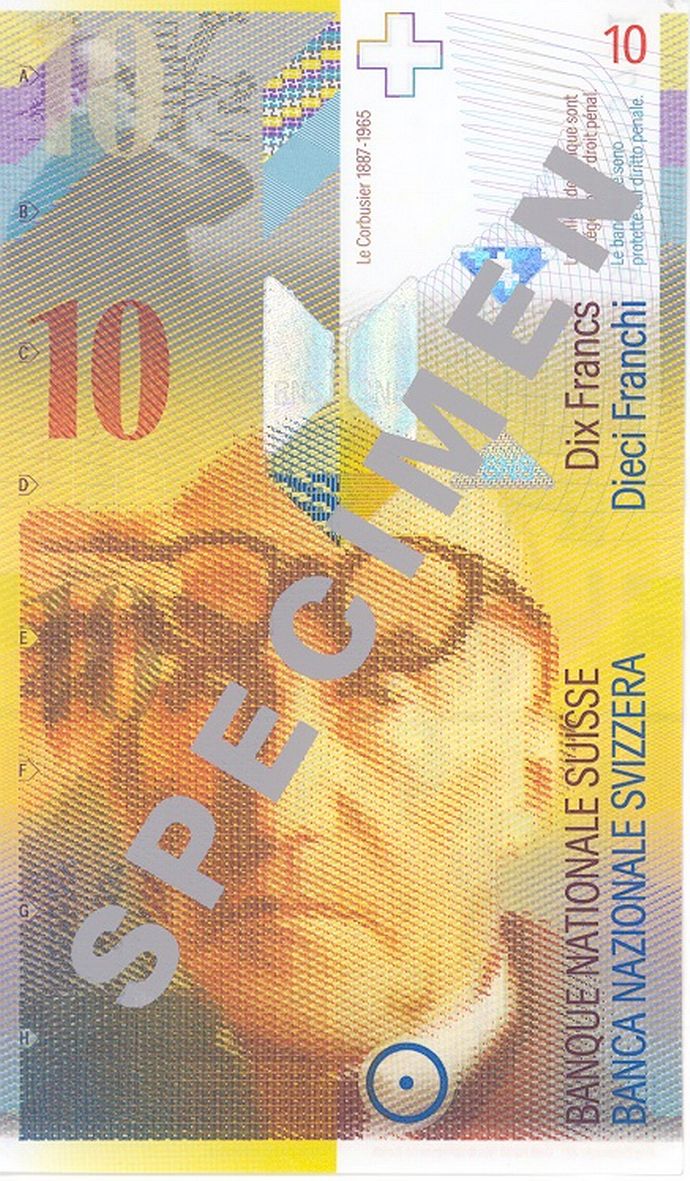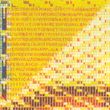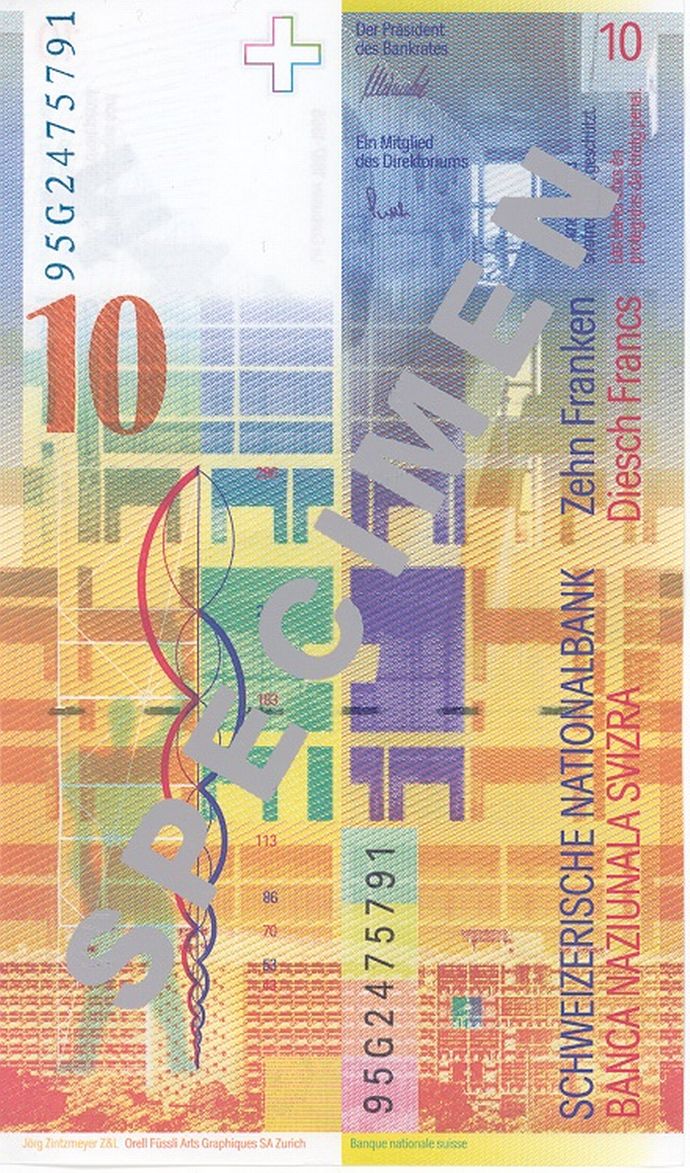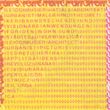Design of the eighth banknote series
The 10-Franc Note
Main colour: Yellow
Dimensions: 126 x 74 mm
Date of issue: 8 April 1997
Personality: Le Corbusier
Remember this man's picture.
The portrait on the front side of the 10 franc banknote shows Charles Edouard Jeanneret, better known as Le Corbusier (1887-1965), one of the outstanding masters of modern design. Le Corbusier was an architect, town planner, urbanist, painter and theoretician whose creative energies focused on the human being. This orientation is expressed, above all, in his pioneering concepts of residential design and urban planning. Le Corbusier used skeleton construction and prefabrication techniques in an innovative industrial approach to building - for example in the government complex in Chandigarh, India. Moreover, he influenced modern design and gained international recognition as a designer of furniture and as an architect of sacred buildings, for example the famous pilgrim church of Notre-Dame-du-Haut in Ronchamp.





